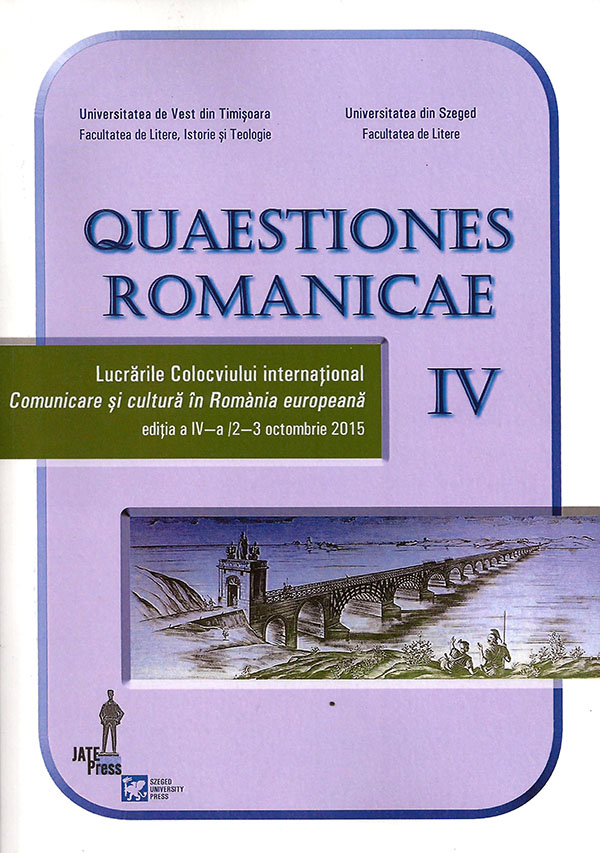Conceptul de Romania în izvoarele literare apusene și bizantine (secolele IV-XV)
Abstract: [The Concept of Romania in Western and Byzantine Literary Sources (4th to 15th centuries)]. Our study aims to analyse the definitions and historical significances of the concept of Romania. The term Romania is found for the first time in Latin writings from the 4th century. Here, it designates the Roman Empire and its civilisation, as opposed to the territory occupied by the barbarians (Barbaricum). During the last quarter of the 4th century, the political unity of the Roman Empire (Romania) is doubled by a unity of faith, as the Empire becomes officially Christian. The limits of the Christian Church are the limits of the Empire itself. This unitarianism between the Church and the Empire is indicated in Latin texts by the same term - Romania, which thus receives a religious connotation. Starting with the 6th century, eastern, Greek-language writers use the term in order to designate the Eastern Roman Empire, whose capital city was Constantinople. The official title of the Byzantine state (Basileia ton Rhomaion) and the word used for the inhabitants of the New Rome (rhomaioi) reflect the idea of continuity between the Old Rome and the New (Constantinople), as well as the Byzantine citizens' belief that they were the descendants of the Romans. After the year 1080, Westerners use the term Romania to refer to the Byzantine Empire, according to Byzantine tradition. Starting with 1204, Romania designates the Latin Empire of Constantinople. In time, the concept and its derivatives received political, ethnical as well as religious connotations.
Keywords: Romania, The Roman Empire, Constantinople, Christianity, Church.
Rezumat: Studiul nostru are ca obiect analiza definițiilor și semnificațiilor istorice ale conceptului de Romania. Termenul de Romania apare pentru prima oară la scriitorii latini din secolul al IV-lea. El desemnează ansamblul format din Imperiul Roman și civilizația sa prin opoziție cu teritoriul ocupat de barbari (Barbaricum). În ultimul sfert al secolului al IV-lea unitatea politică a Imperiului Roman (Romania) este dublată de o unitate de credință a acestui Imperiu, devenit în mod oficial creștin. Limitele Bisericii creștine se confundă cu cele ale Imperiului însuși. Acest unitarism între Biserică și Imperiu este indicat în textele latine prin același termen de Romania, care dobândește astfel și o conotație religioasă. Începând din secolul al VI-lea, scriitorii răsăriteni de limbă greacă desemnează prin termenul de Romania Imperiul roman de Răsărit cu capitala la Constantinopol. Titulatura oficială a statului bizantin (Basileia ton Rhomaion) și numele locuitorilor Noii Rome (rhomaioi) reflectă ideea continuității între Vechea Romă și Noua Romă (Constantinopol) precum și conștiința bizantinilor că ei sunt urmașii romanilor. După 1080, apusenii desemnează Imperiul bizantin prin termenul de Romania în conformitate cu tradiția bizantină. Începând din 1204, Romania va desemna Imperiul latin de Constantinopol. De-a lungul timpului conceptul de Romania și derivații săi au căpătat conotații politice, etnice și religioase.
Cuvinte cheie: Romania, Imperiul roman, Constantinopol, creștinism, Biserică.
